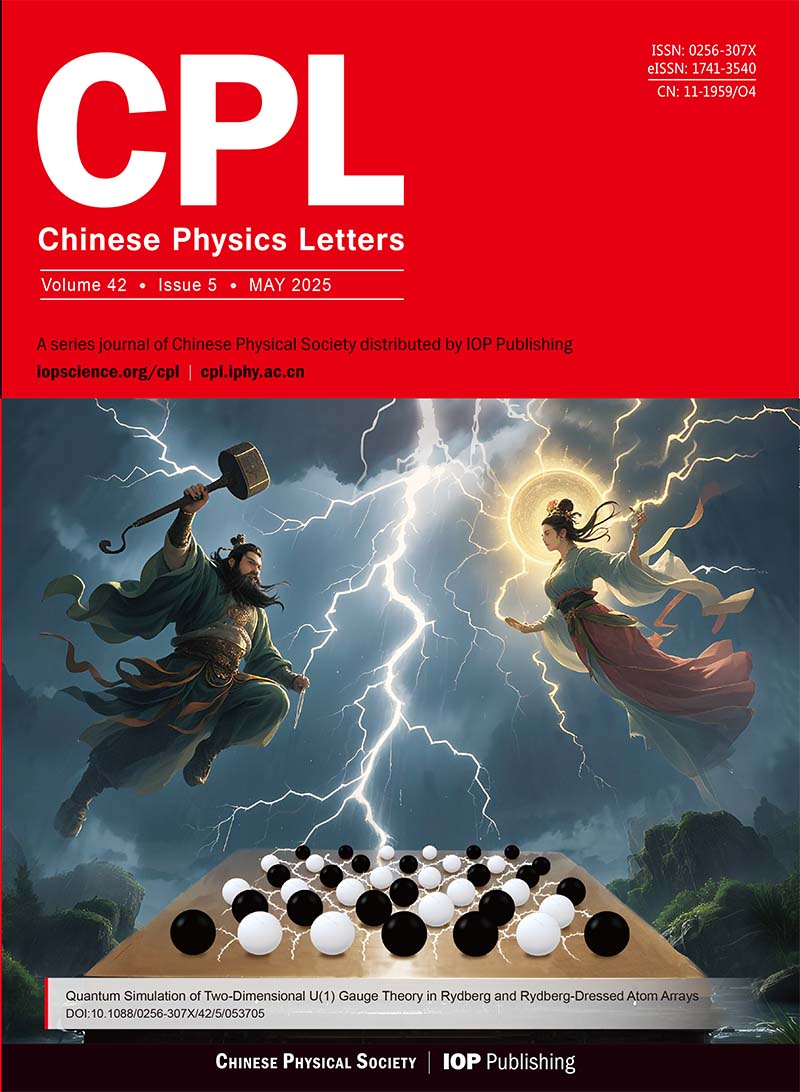Xuan Sun, Wen-Tao Zhang, Lin Zhao, Guo-Dong Liu, Gen-Da Gu, Qin-Jun Peng, Zhi-Min Wang, Shen-Jin Zhang, Feng Yang, Chuang-Tian Chen, Zu-Yan Xu, Xing-Jiang Zhou. 2018: Temperature Evolution of Energy Gap and Band Structure in the Superconducting and Pseudogap States of Bi2Sr2CaCu2O8+δ Superconductor Revealed by Laser-Based Angle-Resolved Photoemission Spectroscopy, Chinese Physics Letters, 35(1): 90-94. doi: 10.1088/0256-307X/35/1/017401
| Citation: |
Xuan Sun, Wen-Tao Zhang, Lin Zhao, Guo-Dong Liu, Gen-Da Gu, Qin-Jun Peng, Zhi-Min Wang, Shen-Jin Zhang, Feng Yang, Chuang-Tian Chen, Zu-Yan Xu, Xing-Jiang Zhou. 2018: Temperature Evolution of Energy Gap and Band Structure in the Superconducting and Pseudogap States of Bi2Sr2CaCu2O8+δ Superconductor Revealed by Laser-Based Angle-Resolved Photoemission Spectroscopy, Chinese Physics Letters, 35(1): 90-94. doi: 10.1088/0256-307X/35/1/017401
|
Temperature Evolution of Energy Gap and Band Structure in the Superconducting and Pseudogap States of Bi2Sr2CaCu2O8+δ Superconductor Revealed by Laser-Based Angle-Resolved Photoemission Spectroscopy
-
Xuan Sun,
-
Wen-Tao Zhang,
-
Lin Zhao,
-
Guo-Dong Liu,
-
Gen-Da Gu,
-
Qin-Jun Peng,
-
Zhi-Min Wang,
-
Shen-Jin Zhang,
-
Feng Yang,
-
Chuang-Tian Chen,
-
Zu-Yan Xu,
-
Xing-Jiang Zhou
-
National Laboratory for Superconductivity, Beijing National Laboratory for Condensed Matter Physics, Institute of Physics, Chinese Academy of Sciences, Beijing 100190;University of Chinese Academy of Sciences, Beijing 100049
-
National Laboratory for Superconductivity, Beijing National Laboratory for Condensed Matter Physics, Institute of Physics, Chinese Academy of Sciences, Beijing 100190
-
Condensed Matter Physics and Materials Science Department, Brookhaven National Laboratory, Upton,New York 11973, USA
-
Technical Institute of Physics and Chemistry, Chinese Academy of Sciences, Beijing 100190
-
National Laboratory for Superconductivity, Beijing National Laboratory for Condensed Matter Physics, Institute of Physics, Chinese Academy of Sciences, Beijing 100190;University of Chinese Academy of Sciences, Beijing 100049;Collaborative Innovation Center of Quantum Matter, Beijing 100871
-
Available Online:
01/01/2018
- Fund Project:
the National Key Research and Development Program of China under Grant No 2016YFA0300300,the National Natural Science Foundation of China under Grant No 11334010,the National Basic Research Program of China under Grant No 2015CB921300,and the Strategic Priority Research Program (B) of the Chinese Academy of Sciences under Grant No XDB07020300
-
-
Abstract
We carry out detailed momentum-dependent and temperature-dependent measurements on Bi2Sr2CaCu2O8+δ (Bi2212) superconductor in the superconducting and pseudogap states by super-high resolution laser-based angleresolved photoemission spectroscopy.The precise determination of the superconducting gap for the nearly optimally doped Bi2212 (Tc =91 K) at low temperature indicates that the momentum-dependence of the superconducting gap deviates from the standard d-wave form (cos(2φ)).It can be alternatively fitted by including a high-order term (cos(6φ)) in which the next nearest-neighbor interaction is considered.We find that the band structure near the antinodal region smoothly evolves across the pseudogap temperature without a signature of band reorganization which is distinct from that found in Bi2Sr2 CuO6+δ superconductors.This indicates that the band reorganization across the pseudogap temperature is not a universal behavior in cuprate superconductors.These results provide new insights in understanding the nature of the superconducting gap and pseudogap in high-temperature cuprate superconductors.
-

-
References
-
-
Access History


 首页
首页 登录
登录 注册
注册






 DownLoad:
DownLoad: